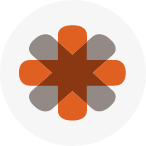Weaving imagination and justice into Strategic Planning
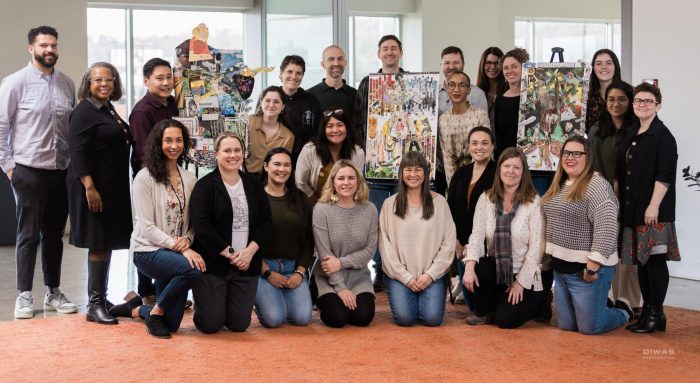
On a recent partly-cloudy March day, 25 Washington STEM colleagues gathered around a large conference table in our SODO neighborhood offices. We sifted through images of mountain vistas, saxophones, bees, tulip fields, and illustrations of children. Early 90s pop ballads wafted through the light-filled conference room as some of us perused craft supplies—markers, scissors, stickers, and glue sticks—on a side table.
This is not your average strategic planning kick-off session. But Washington STEM is not your average organization. As a leading and innovative voice for equity and access in education, the path to our next strategic plan promises to be different in the best way possible.
The Seattle skyline is visible through the floor-to-ceiling window where the following words are affixed: joy, play, justice, transformation, community, liberate, assist, harmony, connection, synergy, integrity, research, encourage, affirm, empower, revolution. Facilitator Michaela Ayers, explained, “I arranged these words and associated images to activate the imaginations of participants prior to moving into the collage practice.”
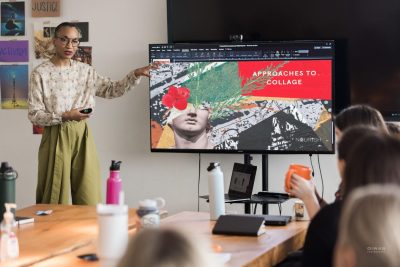
Back in December, Washington STEM’s Chief Operations Officer, Yoko Shimomura, was getting ready for the year-long process to develop a new Strategic Plan for 2025-28. She knew one thing: it had to build upon the organization’s core strengths as a convener of people, ideas and strategies.
“Last time we created our strategic plan we were in the middle of the pandemic, so we had listening and design sessions on zoom. Not ideal. This time I wanted us to gather in the same room and really get creative.”
But Yoko had a problem: how do you get staff—many of whom come from academic backgrounds and are self-described “data nerds”—out of their heads and into their hearts so they can really think creatively?
“Our work is fast-paced, but when we move so fast it’s easy to lose sight of the “why” behind the work,” Yoko said, “As we embarked on this strategic planning process, I knew we needed some kind of new engagement to change this mindset from analytical to visionary.”
Despite what we might hear from other parts of the country where policies that support diversity, equity and inclusion are under attack, here at Washington STEM, these principles are woven into all aspects of our work.
A new approach
Around this time Yoko was introduced to Michaela Ayers, a facilitator who spent years in learning and development in the corporate environment before starting her own company, Nourish, which draws from her artistic roots to integrate art, play and creativity into workshops and employee engagement programs.
Despite what we might hear from other parts of the country where policies that support diversity, equity and inclusion are under attack, in Washington, educators have professional development standards around cultural competency. And here at Washington STEM, these principles are woven into all aspects of our work.
Yoko said, “From our HR policies to data analysis and regional partnerships, from how we measure impact and evaluate public policy proposals—our processes are rooted in justice, equity, diversity, and inclusion. Working with Michaela was an easy choice.”
A spirited storyteller passionate about the connection between social impact and creativity, Michaela also produces a podcast to showcase her collaborations. She recently interviewed Washington STEM CEO, Lynne Varner, and discussed the connections between innovation and imagination—and how these link to the strategic planning process.

Robust strategies start in the imagination
Lynne said, “Harnessing imagination is key to being an innovator. Here at Washington STEM we pride ourselves on co-designing, which is the process of imagining new solutions while in partnership with the people who will be most affected by it. So, by definition, we start with imagination.”
With Michaela’s emphasis on creativity, asking her to facilitate the strategic planning kick-off was a natural first step. Michaela said her workshops are designed to “inspire innovation, build creative confidence, deepen relationships, foster out-of-the-box thinking, and allow fresh approaches to common challenges.” After a few coordinating meetings with the Executive team, Ayers flew in from her base in Detroit and held a half-day workshop at the Washington STEM offices.
“Art can reflect the world we want to create—but first we have to imagine it in order to achieve it.”
-Michaela Ayers
Art as inspiration
We started the day by reflecting on how we can use art to tell a story. Michaela said, “Art can reflect the world we want to create—but first we have to imagine it in order to achieve it.”
Because not all participants identify as visual artists and may not consider themselves to be creative, Michaela delivered a presentation that shared approaches to visual storytelling over time. As an art historian, she curated images from the 15th century to the 1960s to give us an understanding of how meaning is conveyed through art and design. Together we discussed how color, material, and textures work together to communicate a message—and how this medium of collage is open to anyone to play with.
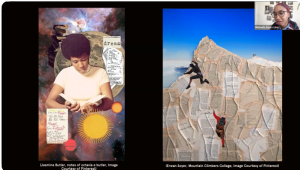
To align with the multi-year strategic planning process, Michaela introduced the format of triptychs to the group. Triptychs are a series of three images placed together to tell a story from multiple points of view. This format was intentional because after the presentation the staff was broken into three groups, aligned with “how we work”: Partnerships & Collaboration; Integrity & Direct Support; Justice & Advocacy.
Sorting, shaping, placing
Michaela distributed three packages of curated collage materials and guided us into the creative process. To begin, teams were invited to sort through the materials, with our assigned concepts in mind. The teams milled around, first sorting the images—sifting through cut-outs from children’s books, nature publications, and artwork from magazines.
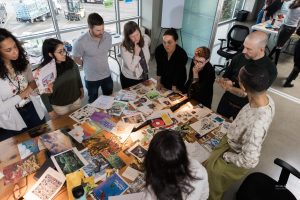
Our communications coordinator, Isabelle Haines, said, “At first it was about fitting magazine clippings together, but very quickly it became about how we as an organization fit into the larger context of our state.”
Another person was overheard asking, “Do we include just the image of the little girl going to school, or show the wider context she faced as she desegregated her school?” And another said, “And how does this relate to Washington where access to K-12 STEM education can impact students’ pathways into high-paying, in demand careers? And how might our work impact this over the next three years?”
Lynne noted to Michaela during their interview that as the session went on, “I saw how folks went from careful cutting of images with the scissors to just ripping paper and putting things together. It seemed the more creative they got to be, the happier they were.”
Michaela recalled observing the scene, “Some teams had different approaches—some were in the intellectual space a little longer before they dove into working with the images.”
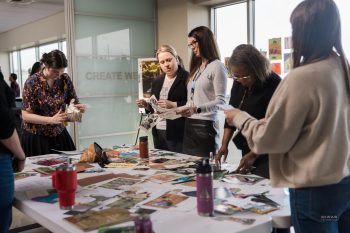
Finally, after sorting and shaping, it was time for placing. Out came the glue sticks and the sea of possibilities represented by the clippings were transformed into three collages, each representing a vision of how Washington STEM staff envision bringing systems-level change into reality.
Isabelle said of the day, “It felt like a field trip, even though we didn’t leave the office. I felt that same perspective shift when you get precious time outside of business as usual.”
Next steps
Through June, we’ll continue to hold community listening sessions to inform the Strategic Plan, then it is time for Design, followed by Writing in the fall. At the end of the year, Washington STEM will have a powerful touchstone to guide its work over the next three and a half years.
And for the individuals involved, impact may be seen on a smaller scale. Some of us may have created space in our homes for ripping out magazine pictures and welding glue sticks as we imagine new realities.
Who knows where it might lead? But for now, it feels good.

Listen to Michaela Ayers’ interview with Lynne K. Varner:
